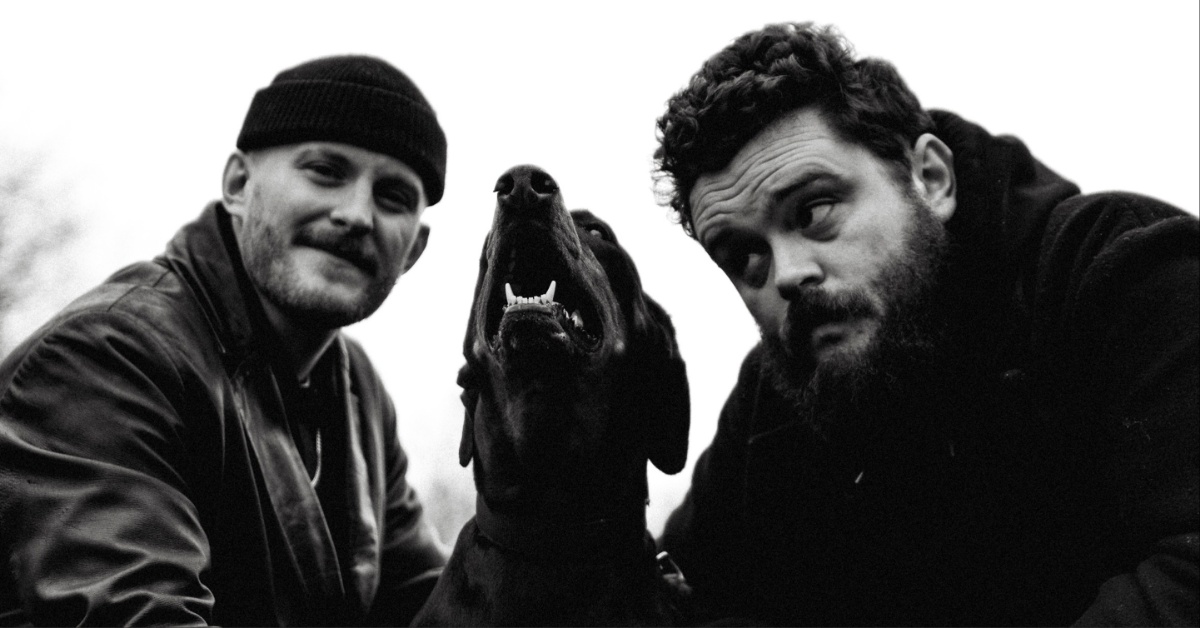
Complicated, Evolved Terrors Lurk within Asian Death Crustacean's "Baikal V"

…
Don’t let yourself get fooled, as I initially did, by the name — Asian Death Crustacean is no novelty act. The London quartet’s tweezer-plated long-form songs unite nuanced musicianship with a heightened sense of awareness of the weight and role each instrument can give, either in the fullness of its presence or in the breadth of its absence. The music on their debut full-length Baikal spans genres as adeptly as it does the boundary between one song and the next, with track divisions serving more as movement markers than a finite wall between one distinct composition and the next.
The album’s fifth segment “Baikal V” begins with one of the record’s weightiest passages, a lumbering cudgel of a riff that erupts out of the feedback swell closing the preceding track. Grab onto the nearest firm object for support, then hit play on our exclusive track premiere:
…
…
Baikal is a concept record centered on the themes of duality and contrast, but also coexistence. It’s reflected through the band’s unification of their disparate musical roots and influences together into an amorphous work that flows between extremes, from ambient swells and crests to surging bombast, from nimble jazz-informed conversations to obliterating sludge. In naming their album for the world’s oldest and deepest lake — one which contains almost a quarter of the earth’s fresh surface water — Asian Death Crustacean succinctly encapsulate the way their music “evoke[s] a sense of exploration into an immense and unknown space of simultaneous beauty and threat.”
Slip underneath the surface of Lake Baikal with our full-band interview:
…
You’ve been performing these songs live for years — what made 2019 the right time to lay them down on tape?
George Bunting (bass): The main reason was the material reaching a point of maturation, each member’s parts having been refined through the process of playing live and the small improvisations and variations that brings out, as well as revisiting the material over an extended period. We also needed to allow time for the ambient/electronic arrangements to get to the same standard as the ‘full band’ sections – they contribute a lot to the overall flow of the album and it took a lot of arrangement work to get them to a state we were happy with.
You traveled all the way to Sweden to record this album — no small undertaking. What factors led to this decision?
Dan Peacock (guitars & sound design): We recorded where we did because we specifically wanted to work with David Castillo (Bloodbath, Leprous) and Jens Bogren (Opeth, Between the Buried and Me), who we’d discussed for a long time amongst ourselves as the ideal recording and mixing engineers for this material. They really understood the balance we wanted between having a very clear and precise mix but also an organic sound, avoiding using anything like Axe-FX or drum triggers. Their experience from their past work with combining clean and heavy elements was really helpful in guiding the recording and mixing process, as was their openness to working directly with us through every stage.
The songs on this record are heavily dynamic with a ton of free-flowing motion, but at the same time, the arrangements are very tight. How much improvisation, if any, is present on this record? Or is everything prewritten in advance down to the note?
Bunting: This differs a little for the guitars and the drums according to how they were recorded. All the guitars and bass were recorded DI in the UK by Dan, [guitarist] Rob [Doull] and I then re-amped at the studio, allowing us comfortable time to arrive at the best possible takes. Most of these parts went through several iterations and re-records, often starting with a collection of takes containing mild variations and improvisations which we then chose our favourites from.
Conversely, all the drums were recorded in the studio in Stockholm. In recording these, we decided to take a mixed approach, with some parts pre-written very specifically and others left open to improvisation to varying degrees. While all the parts had predetermined core structures and ideas, in certain places we wanted to preserve the energy of a more spontaneous “live” performance, particularly in the more jazz-inflected sections.
Walk me through the process of creating an Asian Death Crustacean song, from conception to its final shape.
Rob Doull (guitars): Most of the pieces on Baikal started out as skeletal ideas brought to the table by Dan and me, which were then collaboratively rearranged and elaborated on with the whole band over a long period of time. Our developing and intermingling musical influences over the years fed into the process by providing both wholly new ideas as well as fresh takes on material we previously thought we’d brought to a finished state. Having been very malleable at the start, the compositions and each musician’s individual parts slowly settled over time, aided by testing variations through playing the pieces live, with the drums being the last to be solidified.
Peacock: The ambient sections were constructed largely through extended periods of experimentation. Learning new synthesis techniques was often the seed of inspiration, as well as working with additional collaborators on violin and saxophone. These pieces were written to enable a continuous flow for the entire album, such that it can be experienced as a single overarching progression, but also composed so as to be dynamic and evolving in their own right.
Bunting: The recording of the album was dominated by two continuous 20-something minute arrangements, each assembled in projects containing in the region of a hundred separate tracks, which were a lot of work to construct in themselves. In the process of preparing the tracks for the studio, a lot of extra interweaving and supporting guitar layers were added. Although some of these extra layers ended up being taken out based on Jens’s recommendations during mixing, the pieces noticeably took on a further level of maturation during the recording process.
Though the album is constructed so it can be listened to as one continuous piece of music, it was recorded in two halves to make things easier to manage, and it was only once all recording, mixing and mastering was completed that we decided on a division of six parts. We also still have a master of the two original seamlessly-playing halves, which it could be cool to release some day as well — perhaps even as a physical vinyl release.
How central has the thematic focus of Baikal been to your songwriting process as a band? Can you expand on the story that you’re telling through this album, and share how it informs your music?
James Kay (drums): We didn’t start from a predetermined concept which we then wrote music for, but instead found that themes naturally emerged from the process of writing and thinking about each arrangement and its place in the context of the album. Baikal ended up, for us, representing themes of metamorphosis and self-transformation, evoking a journey of unfolding the many sides of a whole in tension. If you took this in a more self-reflective direction, it could be a process of coming to terms with the tension of the many “selves” within your psyche, including its negative dimensions.
This duality of opposed but inseparable aspects is a theme that reappears in the cyclical patterns of progression and return through the arc of the album, posing an underlying inevitability alongside the spontaneous flow of the music, as well as in the opposing moods of euphoria and aggression that ebb and flow in the album. Following the end of the recording process, in looking for suitable artwork for the record, we were drawn to a sun motif as capturing a related dualism of creation and destruction.
You describe your 2013 origins as “unlikely” — can you expand on how the band got together? What drew you to each other as musicians and creative partners? How did the group initially get going?
Doull: Dan met James by chance onstage at an improv event, and afterward, they formed an improvisational jazz fusion project. James was also playing in a blackened death metal band with me, and when both projects came to an end, we had the idea of experimenting with merging the remnants of the groups together. Dan had also been collaborating musically with George on and off since they went to school together, and Dan suggested that George could be an interesting addition on bass. George actually turned out to be great at musically bridging some of the elements in the band’s collective palette that might otherwise have been difficult to reconcile with each other.
We were drawn to collaborate creatively by the shared sense of wanting to use genre and instrumental technique as tools to create an emotional effect on the listener. Our collective breadth of musical influences also gave us a great feeling of creative freedom within the project.
On a closing note, how about some context for the band name?
Kay: The name’s just something that came out of my imagination. There’s no particular literal meaning.
…
Baikal releases June 26th. Follow the band’s Instagram for the latest news.
…
Support Invisible Oranges on Patreon and check out our merch.
…










